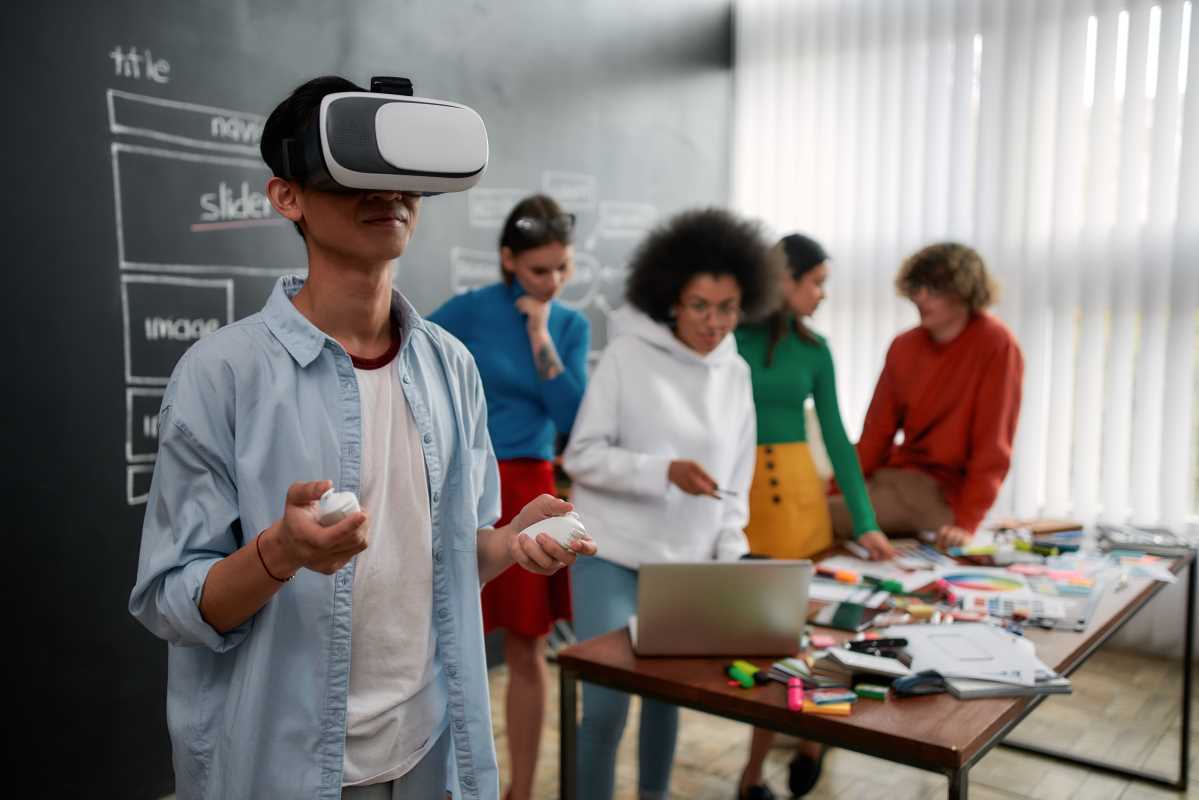Virtual Reality (VR) is revolutionizing various sectors, and higher education is no exception. This cutting-edge technology creates immersive, interactive experiences by simulating real or imagined environments, offering unparalleled opportunities for learning and engagement. As institutions seek innovative methods to enhance teaching and learning, VR is emerging as a powerful tool to redefine classroom experiences.
The Basics of Virtual Reality in Education
Virtual Reality leverages advanced hardware and software to immerse users in digitally created environments. Students can use VR headsets, motion controllers, and specialized applications to interact with simulations that mimic real-world scenarios or explore entirely new dimensions. This immersive quality distinguishes VR from traditional digital tools, enabling learners to engage deeply with the material. In higher education, VR offers benefits across various disciplines. Whether exploring historical sites, conducting complex scientific experiments, or practicing surgical techniques, VR enhances experiential learning, a cornerstone of effective education.
Benefits of VR in Higher Education
1. Immersive Learning Experiences
- One of VR's most compelling advantages is its ability to create immersive learning experiences. Instead of passively absorbing information through lectures or textbooks, students can actively engage in simulated environments. For instance, history students can "travel" back to ancient civilizations, while biology students can explore the human body at a cellular level. This immersive approach not only deepens understanding but also makes learning memorable.
2. Hands-On Practice
- In fields such as medicine, engineering, and architecture, hands-on practice is crucial. VR allows students to gain practical experience in a safe, controlled environment. Medical students, for example, can practice surgical procedures without risking harming a patient. Similarly, engineering students can design and test structures virtually before moving to physical prototypes. This reduces costs and risks associated with traditional methods of practice.
3. Accessibility and Inclusion
- VR can bridge gaps for students with disabilities or those who face barriers to traditional learning environments. For instance, students with mobility challenges can explore locations or participate in otherwise inaccessible activities. Additionally, VR can support diverse learning styles, offering visual, auditory, and kinesthetic engagement, thus catering to a broader range of learners.
4. Global Collaboration
- Through VR, students can collaborate in a shared virtual space with peers and experts worldwide. This fosters global perspectives and cross-cultural understanding. For example, business students can engage in international trade simulations with participants from different countries, gaining insights into global markets and cultural nuances.
5. Enhanced Engagement and Motivation
- VR’s interactive and gamified nature captures students' attention and motivates them. By transforming learning into an adventure, VR reduces the monotony often associated with traditional teaching methods. This heightened engagement can lead to better retention of information and improved academic performance.
Challenges of Integrating VR in Higher Education
Despite its potential, adopting VR in higher education comes with challenges. Understanding these hurdles is essential for effective implementation.
1. High Costs
- VR technology can be expensive, particularly for institutions with limited budgets. The cost of VR headsets, software licenses, and custom content development can be prohibitive. However, as technology advances and becomes more mainstream, prices are expected to decrease, making VR more accessible.
2. Technical Barriers
- The successful integration of VR requires robust infrastructure, including high-speed internet and powerful computers. Technical glitches, such as software crashes or hardware malfunctions, can disrupt learning and frustrate users. Moreover, institutions need trained staff to manage and maintain VR equipment.
3. Content Development
- Developing high-quality VR content tailored to specific educational needs is a complex and time-consuming process. While some industries offer ready-made VR applications, many academic subjects require custom solutions. Collaboration between educators, developers, and subject matter experts is critical to address this challenge.
4. Health and Safety Concerns
- Extended use of VR can cause discomfort, such as eye strain, motion sickness, or fatigue. Institutions must establish guidelines for safe usage and ensure that VR experiences are designed with user well-being in mind.
5. Resistance to Change
- Adopting VR involves a cultural shift in teaching and learning practices. Some educators may resist this change due to unfamiliarity with the technology or skepticism about its effectiveness. Providing professional development and demonstrating the value of VR can help overcome this resistance.
Applications of VR in Higher Education
1. Medical Training
- VR transforms medical education by offering realistic simulations for anatomy studies, surgical training, and emergency response scenarios. These simulations provide a risk-free environment for students to hone their skills, enhancing competence and confidence.
2. STEM Education
- VR enables students to conduct experiments and visualize complex concepts in science, technology, engineering, and mathematics (STEM) fields. For example, chemistry students can explore molecular structures in 3D, while physics students can simulate and analyze experiments.
3. Arts and Humanities
- In the arts and humanities, VR opens up creative possibilities. Art students can create and exhibit virtual sculptures, while literature students can immerse themselves in the settings of classic novels. History students can experience pivotal moments through detailed reconstructions of historical events.
4. Business and Management
- VR is a valuable tool for business students, offering simulations of corporate environments, negotiations, and market scenarios. These experiences prepare students for real-world challenges by enhancing decision-making and problem-solving skills.
5. Language Learning
- Language learners can practice their skills in virtual environments that simulate native-speaking contexts. For instance, students learning French can "visit" Paris and engage in conversations with virtual characters, improving fluency and cultural understanding.
The Future of VR in Higher Education
As VR technology evolves, its role in higher education is expected to expand. Emerging trends include the integration of artificial intelligence (AI) to create adaptive learning environments and using augmented reality (AR) to blend virtual and physical worlds. Institutions may also adopt cloud-based VR platforms, enabling students to access content from anywhere. Furthermore, as VR becomes more affordable and user-friendly, it will likely move beyond niche applications to become a mainstream educational tool. This shift will require ongoing investment in infrastructure, training, content development, and a commitment to addressing ethical and accessibility considerations.







